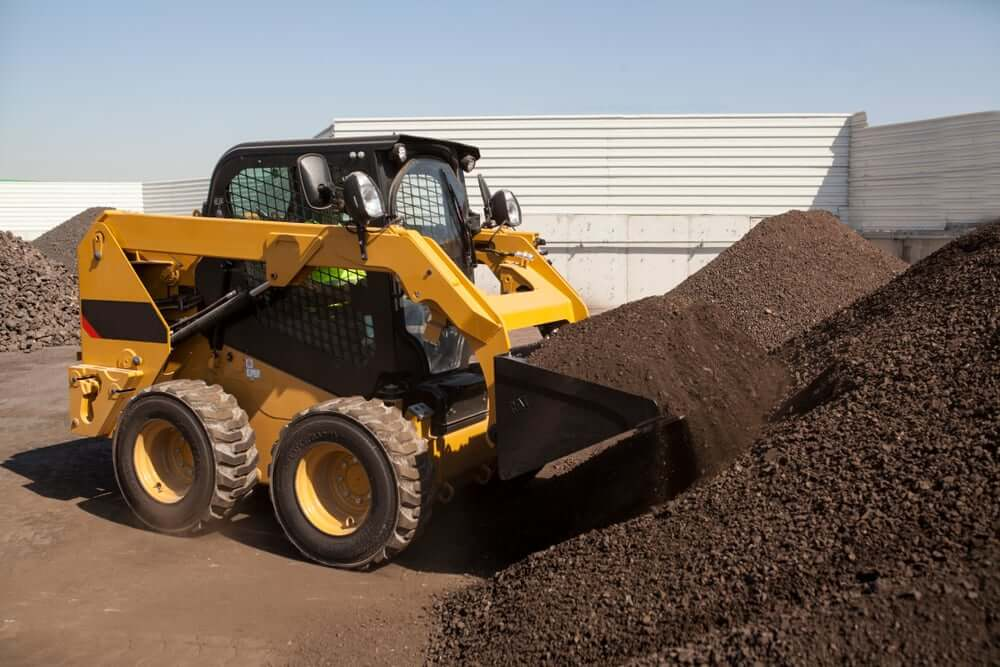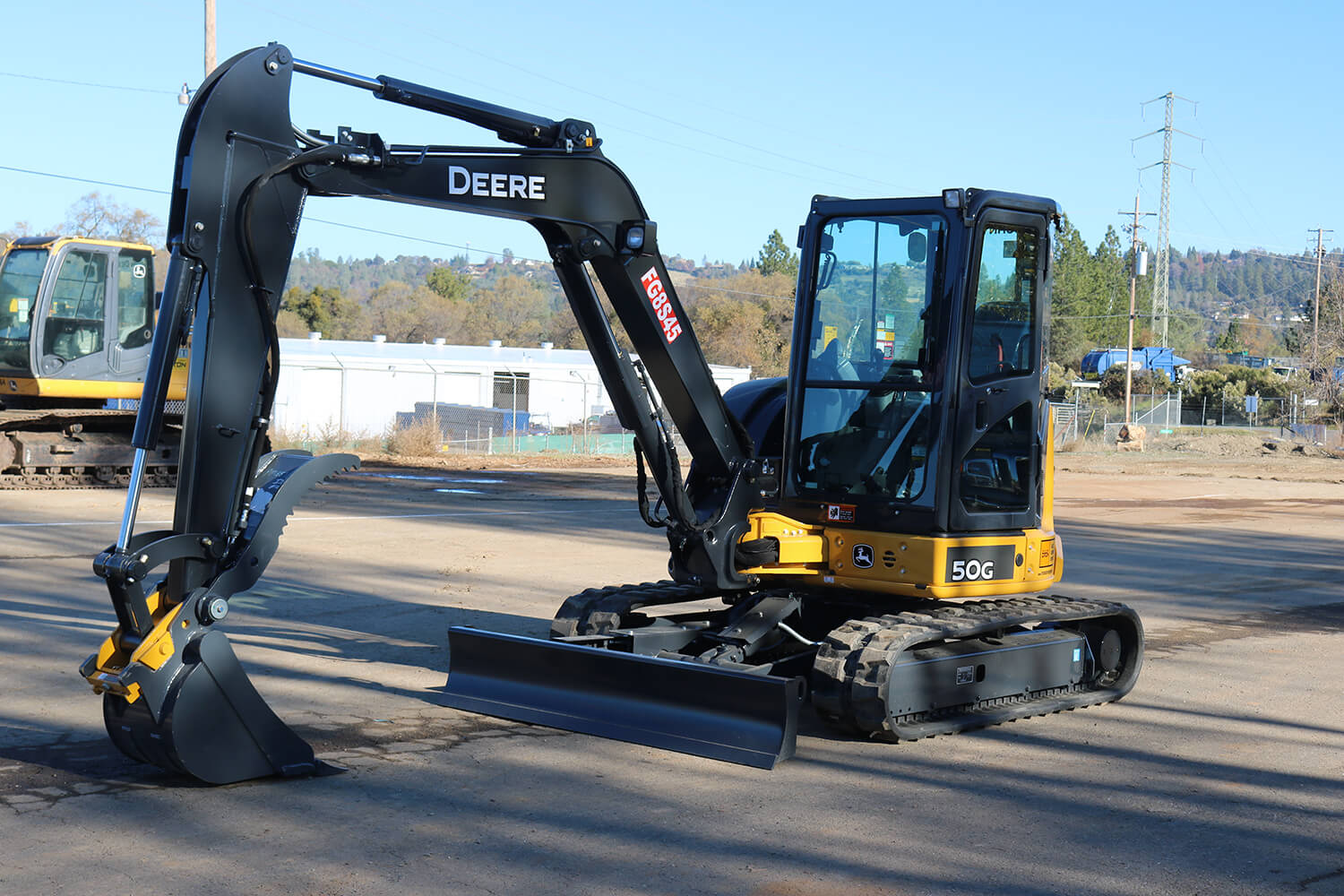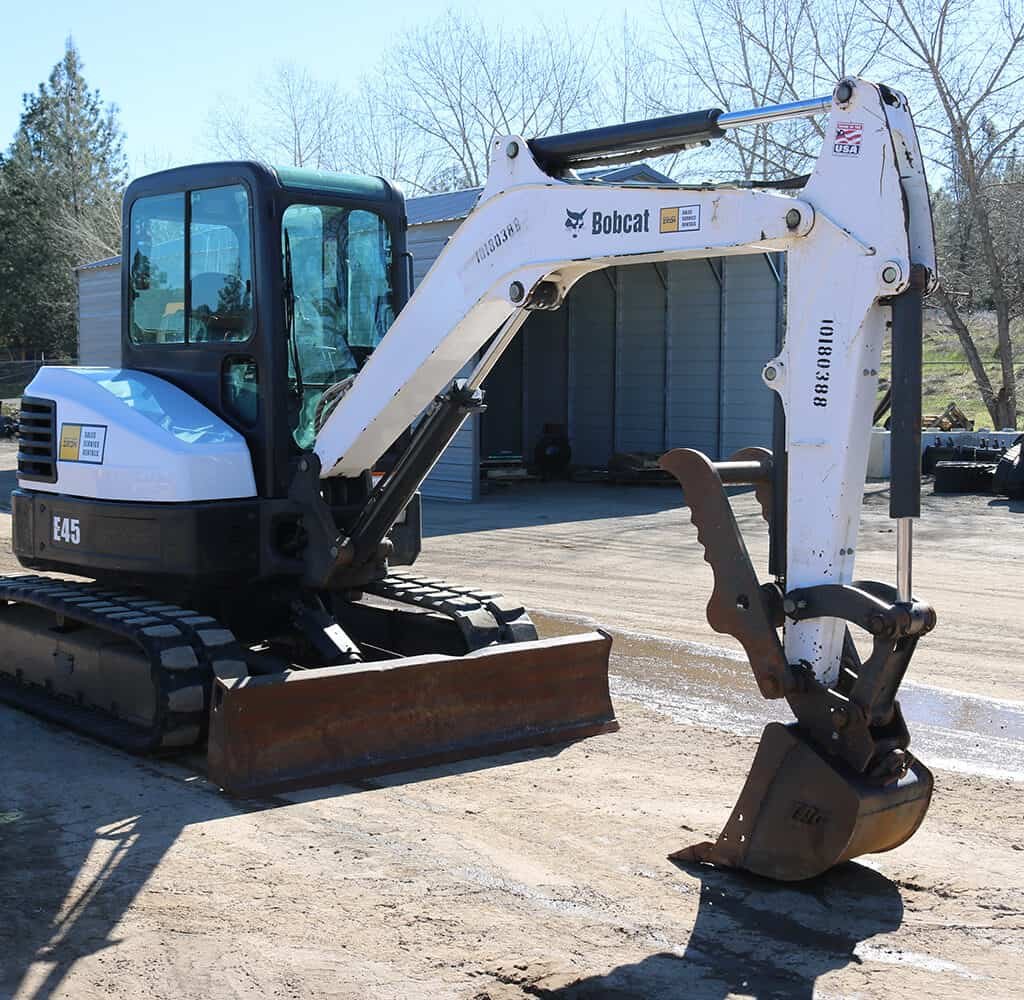مقدمة
An excavator machine and skid steer loaders are two of the most common types of construction equipment. Both are recognized for providing operators with ease and comfort while performing complex tasks. Each machine has pros and cons, and selecting a specific machine depends on various factors.
Finding the appropriate machine depends on your application, job site conditions, and available space. Additionally, work speed and machine utilization potential should also be considered. Excavators are extremely tough machines. Their weight ranges from 1.5 to 13 tonnes, making them ideal for heavy hauling and large-scale excavation.

Skid steer loaders frequently have a bucket that faces away from the operator. An excavator machine is a machine that excavates and drags soil toward the machine while the skid steer removes debris. Excavators sacrifice maneuverability in return for substantially increased operational performance.
Such a machine could not be used to move a pallet, but it is essential for large-scale construction, demolition, and landscaping projects. Many of our clients are unsure whether a skid steer or a full-size excavator machine will better meet their needs. This article explains the fundamental differences between these machines.

Skid steer loaders
Skid steers are top-rated small machines excavating, pushing, and moving dirt. These machines are used for various tasks, including backhoeing, pavement milling, tilling, site cleaning, and wood chipping. On the other hand, Excavators are distinguished by their fixed carriage.
Advantages
Several characteristics distinguish the skid steer from similar types of devices. One of its primary advantages is its zero-radius turning capability. The wheels on the right and left sides can operate independently. It allows the vehicle to rotate 360 degrees without moving forward or backward. As a result, the machine is ideal for use in confined spaces with limited space.
Another advantage is the versatility of the attachments attached to the skid steer’s hydraulic system. The primary attachment is a standard bucket, but several specialized attachments are also available.

Disadvantages
Due to their limited size and power, more extensive tasks, such as digging massive holes in the ground, are unsuitable for skid steers. The weight of wheeled skid steers is distributed across only four contact points which is a disadvantage. As a result, it is prone to sinking into mud and tire failure on rough terrain.
What Factors To Consider When Choosing The Right Skid Steer Loader?
Think about what you need from your skid steer before choosing the best skid steer loader. Before choosing a skid steer loader, there are many things to think about:
Size
The first thing to think about is how big the skid steer is. You can finish your project faster if you choose the right skid steer. Make sure that the soil on your construction sites can handle the weight of the machines. Many different sizes can be used to complete a wide range of projects with different sizes. Before choosing the size, you must determine if your workspace is narrow or broad.

It will help you figure out how big and powerful a machine you need. Small frame skid steers are great for demolition work because narrow frames make it easy to move along paths. You might need a medium-sized to large skid loader for more significant projects.
Job Surface
You will also need to think about the kind of ground on which your project will be performed. There are two kinds of skid steers; skid steers with wheels and skid steers with tracks. Wheeled skid steers can only work on flat, hard surfaces like cement because the wheels can’t handle rough terrain.
Tracked skid steers are the most flexible choice. They can handle rough and uneven terrain and keep working in different types of weather.

Controls
Controls are another thing to consider when deciding what kind of skid steer loader to rent. A skid steer with a control panel that is relatively easy to use is preferable. Assess how many control options your machine has to get the most out of it.
Pedals and levers control most traditional skid steers. However, in recent years, skid steer loaders have been made with less force-intensive joystick controls.

المرفقات
The skid steer loader has many attachments that can help you with your project. But not all attachments can be used with all skid steers. Choosing a machine that can be used with the proper attachment is essential.
Buckets: Buckets for skid steers make it easy to dig, scoop, level, sift, back-blade, and pick up rocks, among other things.
Ground Engaging Tools: An Auger Drive can be used to drill holes. The Chain Trencher can be used to dig perfect trenches. A Ripper can cut through hard ground, and an angle Dozer Blade can level the ground.
Forks Attachments: A skid steer can lift things safely and efficiently with fork attachments.

Concrete Mixers: Attachments for moving and working with concrete make mixing and pouring concrete easier.
Vegetation Control: Attachments in this category include Slashers, which cut a lot of plants at once. Push Rakes to clear fence lines and trees. Stump Buckets make it easy to remove stumps, dig trenches, and many others.
Grapples: The increased flow rate of solid grapple attachments gives them a lot of strength to hold onto the rugged cargo. They can also be used to down trees, heaps of trash, rocks, and other stuff.
Brooms: Attachments for skid steer brooms are made to make it easy to clean up construction sites, livestock yards, and roads.
Excavator Machine
A typical excavator machine is suitable for completing a large project quickly and with simple access to the site. Large-scale construction, demolition, and landscaping can be accomplished more efficiently and rapidly. Excavators can weigh between 1.5 and 13 metric tonnes.

Choosing The Right Excavator Machine
The project’s tasks and settings determine the machine chosen. An excavator is probably your best bet if you can only rent one machine.
Compact Excavator
Mini excavators, also known as compact excavators, are best suited for small to medium-sized tasks. They are versatile machines carrying the majority of the same functions as larger machines.
Being small offers several advantages, including easy accessibility and portability. They have decreased wear and tear and low operating costs. Owners should expect lower fuel expenses because the excavators are lighter than standard excavators.
حفارة زاحفة
Crawler excavators, also known as track excavators, use a chain-tracked wheel arrangement. It provides higher stability, balance, and efficiency than wheeled excavators. Attachments such as hydraulic breakers, augers, grading blades, and grapples can be used with the machine. Earthmoving; Landscaping; Trench digging; Material handling are all applications for a crawler excavator.
Dragline Excavator
Dragline excavators are significantly larger than ordinary excavators. The smallest dragline excavators weigh around 8,000 tonnes, while the larger ones weigh 3,000. The dragline excavators’ hoist rope is hooked to the bucket.
A hoist rope lowers and raises the bucket, and the dragline brings the bucket closer to the operator. The equipment can do much greater operations like; Deep pile driving, surface mining, and undersea activities.
Long Reach Excavator
As the name implies, the long-reach excavator can reach further than standard excavators. Its extending arm can reach over 30 yards, making it excellent for difficult-to-reach locations.
This excavator is perfect for demolitions and dredging enormous amounts of material from rivers. You may do cutting and crushing jobs with the attachment of various accessories.
Wheeled Excavators
These wheel excavators have greater mobility, speed, strength, and durability. They can increase lift capacity, lower operational expenses, and traverse work locations quickly. Topography and applications are the most significant elements when considering wheel excavators.
Deciding Between Skid Steer Loaders & Excavators
When determining the best building machine, it is critical to understand the characteristics of each construction machine. Several factors influence the decision between a skid steer and an excavator. The most important of them include; mobility, attachment options, and capabilities.
Mobility
One of the most noticeable differences between skid steers and excavators is mobility. Skid steer loaders, unlike excavators, can make zero-radius turns. In other words, the wheels on either side of the skid steer can work independently.
As a result, the skid steer may rotate 360 degrees without moving forward or backward. Such a feature is handy for operators in small work sites with limited turning space.
المرفقات
Skid steer loaders and excavators both come with a multitude of accessories. The number of attachments that may be mounted is far more than that of an excavator. Excavator attachments include; a bucket, auger, grapple, and breaker to accomplish various tasks.
On the other hand, skid steer loaders can be outfitted with the above accessories and many tools. They are unquestionably the more versatile machine due to their availability with hundreds of different attachments.
Capabilities
When comparing the capabilities of an excavator and a skid steer, the differences are much more pronounced. The vast diversity of attachments and accessories can be mounted to skid steers.
On the other hand, Excavators have the upper hand in excavation. Excavators are frequently the superior alternative on construction sites where digging into the ground is.
Final Thoughts
Choosing the suitable machine for the right task gives the best performance and productivity. You will need to access critical possibilities to save time and money and be as efficient as possible. Mini excavators and skid steers are standard construction machines with specific features. The most critical factors we should consider are mobility, capability, and size.
As a result, being superior depends on many factors, their efficiency on specific surfaces and attachment flexibility. All of us cannot find a specific machine that fulfills our needs.


